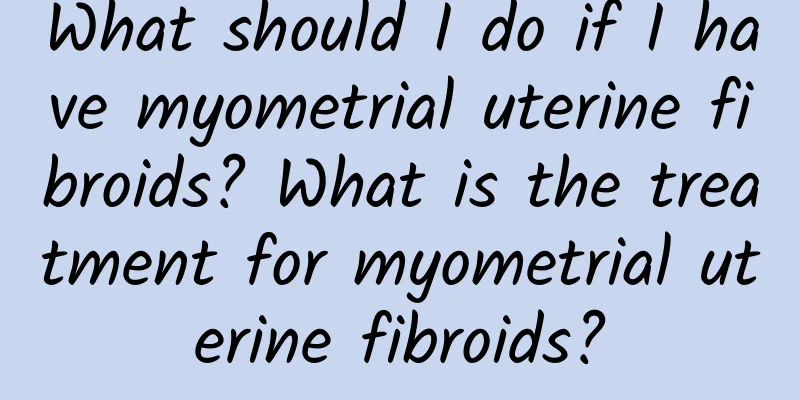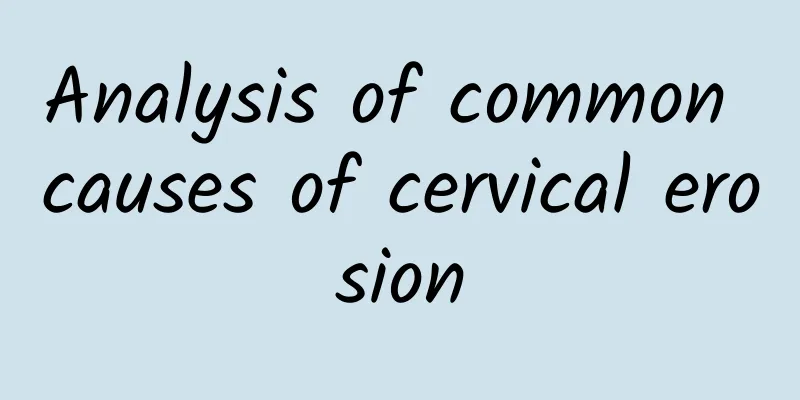What should I do if I have myometrial uterine fibroids? What is the treatment for myometrial uterine fibroids?

|
Among gynecological diseases, uterine fibroids are the most common benign tumors in women and one of the most common tumors in the human body. But even if it is benign, it is still a tumor, and we should know more about this disease and do a good job of prevention. So, what is the treatment for myometrial uterine fibroids? Myometrial uterine fibroids refers to the location where the fibroids grow, that is, myometrial uterine fibroids grow in the myometrium. The treatment of uterine fibroids depends on the patient's age, symptoms, location, size, growth rate, number, uterine deformation, whether to retain fertility and the patient's wishes. The treatment of myometrial uterine fibroids mainly includes conservative treatment, surgical treatment and minimally invasive treatment. 1. Conservative treatment Conservative treatment of uterine fibroids must meet the following conditions: first, the tumor size does not exceed 6 weeks; second, the patient is postmenopausal and asymptomatic; third, the patient is near postmenopausal and can reduce bleeding through non-surgical treatment; fourth, the patient cannot tolerate surgery. Conservative treatment mainly includes expected treatment and drug treatment. 1. Expected treatment. Applicable population: patients aged 40-50 years old who have begun menopause and have no obvious clinical symptoms such as bleeding and pain. 2. Drug treatment. Advantages: The current conservative treatment is mainly drug treatment, which can avoid the pain and sequelae caused by surgery. If drug treatment is not ideal, then consider minimally invasive or surgical treatment. 2. Applicable groups for surgical treatment: The size of the fibroid is equivalent to a uterine pregnancy of more than one and a half months. In addition, if the fibroid grows rapidly, the tumor protrudes from the abdominal cavity and has a tendency to twist, it should also be surgically removed. Of course, when deciding on surgery, other indications should also be considered, such as severe anemia, heart disease, and general condition. 3. Advantages of minimally invasive coagulation knife technology: preservation of the uterus, no bleeding, less pain, no hospitalization, and quick recovery. Disadvantages: It is helpless for people with pedunculated serosa-derived fibroids, fibroids with malignant changes, and acute and chronic genital inflammation. Surgery can only be performed after the inflammation is controlled. |
<<: How to treat uterine fibroids? What are the treatments for uterine fibroids?
>>: What are the treatments for uterine fibroids? Dietary conditioning methods for uterine fibroids
Recommend
Analysis of the top 10 foods for weight loss! Understand in 1 minute which are good helpers for weight management?
The overweight and obesity rate among adults in T...
How can patients with Bartholinitis take care of themselves?
Bartholinitis is an inflammation caused by infect...
Analysis of the four main treatments for uterine fibroids
At present, there are four main treatment methods...
What should I eat if my period is delayed? How to treat delayed menstruation
Many female friends take medicine to regulate whe...
What are the five major hazards of uterine fibroids? What harm will uterine fibroids cause to the body?
What are the five major hazards of uterine fibroi...
How to prevent Bartholinitis
Overview of Bartholinitis: Bartholin glands, also...
What are the dangers of long-term amenorrhea?
I believe that all female friends know about wome...
How terrible is cervical precancerous lesions during pregnancy?
Cervical precancerous lesions may be caused by re...
Can ectopic pregnancy be passed on to the next generation?
Will ectopic pregnancy be passed on to the next g...
Get rid of obesity in children! 5 common sugary drink myths
Children's Day is approaching on April 4th. A...
What is the relationship between hyperprolactinemia and amenorrhea?
Hyperprolactinemia is the most common pituitary d...
Can I use mugwort foot patch during menstruation? It depends on the individual
Whether you can apply mugwort foot patches during...
Postpartum vulvar itching and abnormal vaginal discharge
If you experience vulvar itching and abnormal vag...
What should I pay attention to in my diet for chronic cervicitis and cervical erosion? Does chronic cervicitis and cervical erosion affect pregnancy?
Chronic cervicitis and cervical erosion are commo...
How should women cure vulvar leukoplakia in time?
I believe that many women want to get a cure in t...









